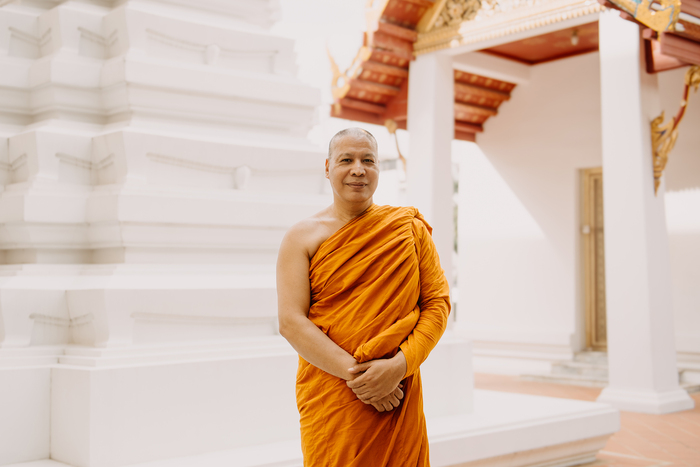
Nestled right in the heart of Bangkok’s old city, Wat Bowonniwet Vihara is a serene refuge from the hustle and bustle beyond its gates. Despite its historical and royal significance, it remains largely undiscovered by tourists, and even many locals rarely step inside. This temple has long been an important stronghold of Thai Buddhism, serving as the monastic home to several Supreme Patriarchs, including the highly esteemed King Rama IV before he ascended the throne. I’m here on a hot October afternoon as the sun strikes the golden rooftops to meet with Phra Anil Sakya, a leading Buddhist scholar and the newly appointed vice abbot of this revered monastery.
Ordained in the Thai tradition but originally from Nepal, Phra Anil graduated from Cambridge University with an M.Phil, and later went on to gain a Ph.D. in Social Anthropology at Brunel University. As someone with one foot each in the fields of Buddhism and Western academia, his insights into the urgent issues of our time bring a modern lens to ancient Buddhist principles, showing not only their continued relevance in today’s rapidly changing world, but how the Buddha’s teachings have been right all along.
Our conversation delves into a wide range of subjects. We discuss how the five precepts should not be seen as prohibitions, but rather as tools for ethical self-education, particularly in an age dominated by digital distractions and misinformation. We also look at sustainability, with Phra Anil explaining how Buddhist monastic traditions, from mindful consumption to upcycling robes, holds valuable lessons for tackling today’s environmental crisis. Finally, we explore the Buddha’s life story, and what inspiration we can take away from it right now. Enjoy!
Study Buddhism: Many people, especially in the modern world, might find Buddhism’s first teaching—that life is dukkha—somewhat pessimistic. Could you explain how this central concept shapes our understanding of happiness and dissatisfaction in daily life?
Phra Anil Sakya: The most important teaching in Buddhism is the Four Noble Truths, and yes, for many newcomers, this might seem pessimistic, especially since it begins with the idea that “Everything is dukkha.” However, it’s important to clarify that this doesn’t mean suffering. While dukkha is often translated as suffering, it actually refers to something unsatisfying or unstable, something that doesn’t remain in one state. Think about it: our bodies and minds are always changing. If they stopped changing, it would mean we have died! The Buddha’s perspective is that everything is, in each instant, in motion. Once something is constantly moving, it becomes unsustainable. The core issue at hand, then, is that everything is unstable.
This instability becomes problematic because when we love or like something, we want it to remain as it is. We want to keep it just as it is. You don’t want it to change. When you are young, you want to stay young forever. But that’s impossible! You get a new phone, and you want it to stay perfect forever. A year later, a newer phone comes out, and you feel dissatisfaction because things keep changing. That’s the whole idea.
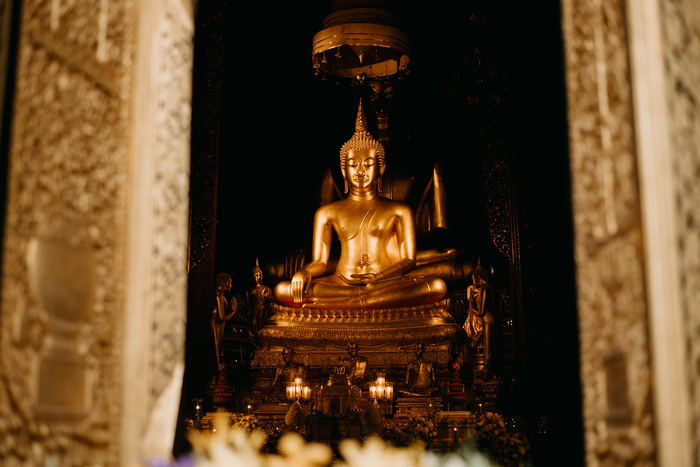
The Buddha teaches that everything is always changing. This is the essence of dukkha. When you experience dukkha, you feel unsatisfied with what you have or with what is happening around you because you want things to remain fixed. You might desire a particular person or situation, but they may not return your feelings or stay as you wish. These situations are constantly arising.
The Buddha advises us to accept this as a natural truth, but generally speaking, we don’t realize that this is our reality. We often try to assign blame, thinking, “I’m not good enough for her,” or “She’s not good enough for me.” We search for excuses outside ourselves—his problem, her problem, or problems caused by the economy, politics, and so on.
The key is to accept the truth. Once you do, you open yourself to the Buddha’s mind and teachings. With acceptance, you are ready for anything. Instead of blaming, look at the source of the problem. Why does it cause you dukkha? Why are you unsatisfied? Once you understand the root of the problem, you can work to fix it. This is the Third Noble Truth. After identifying the problem, the Buddha presents as the Fourth Noble Truth the Eightfold Path—not eight separate paths but eight aspects of one path. The Eightfold Path is a tool to help solve problems and navigate life’s challenges.
We often think of the Eightfold Path as eight separate elements, but you just described it as an integrated whole. Could you elaborate on how these different aspects interconnect to form a holistic approach to overcoming dukkha?
The Eightfold Noble Path is divided into three categories: the social aspect, the mental aspect, and the intellectual aspect. These categories encompass different parts of the path. Starting with right view, it’s important to recognize that calling it "right" can make it seem subjective. The Pali word "sammā" literally means extinguishing or calming. Extinguishing what? Views that increase greed, hatred, and aversion—mental defilements that cause suffering. It pacifies. So, right view means having a perspective that calms these defilements and helps pacify greed, anger, and ignorance.
The same applies to right thought, right action, right speech, right livelihood, right mindfulness, right effort, and right samādhi or right meditation. These fall into the social aspect, or sīla, often translated as precept. However, I personally don’t like the word "precept," as it can reflect a European view implying a set of rules. Sīla actually means to be normal or to normalize oneself.
What is a normal human being? It’s a being trying to survive. From birth, we do not have hatred or greed. We don’t hate our father or mother. We are born pure, without knowing right or wrong. We are so pure at birth. As we grow, the goal is to reduce greed and hatred and develop a friendly, learning attitude. This is why right livelihood, right speech, and right action fall under the social aspect, sīla, as part of the three trainings in Buddhism.
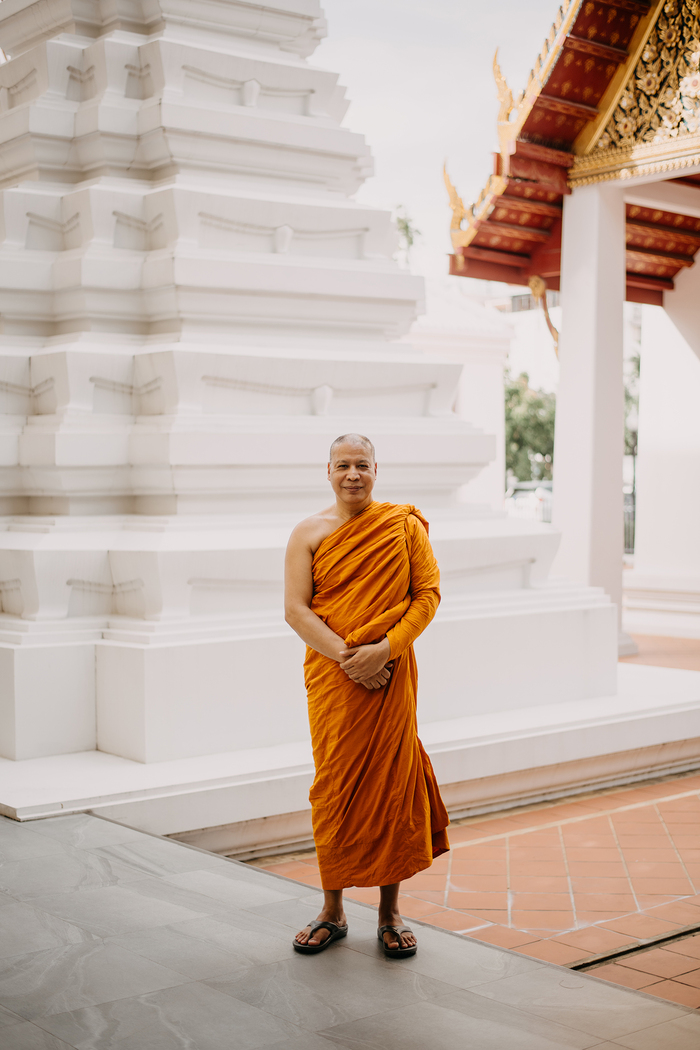
The second part is samādhi, covering right effort, right mindfulness, and right concentration. This focuses on individual mental development. It involves how you deal with yourself and how you develop your mind. You need to learn about society, yourself, and how to integrate these aspects.
The third aspect is wisdom, or paññā, which includes right view (sammā-diṭṭhi) and right thought (sammā-saṅkappa). This part relates to wisdom. Right view pacifies mental defilements, while right thought aligns with this view.
The Eightfold Path doesn’t mean going in eight different directions. If you have the right view—one that pacifies mental defilements—you also need right thought, right speech, right actions, right concentration, and right mindfulness. All these aspects are embedded in the right path.
Once on the path, it’s easier to understand how to place yourself within society, work on personal development, and integrate these aspects. It’s about working with society and yourself to grow and develop wisdom. The Eightfold Noble Path is a holistic approach the Buddha gave to solve problems. You can apply the Eightfold Path to anything at all—in economics, education, married life, crises, or bioethics.
You just mentioned your reservations with the term precepts, which can sometimes imply rigid rules. Yet, the Five Precepts are a fundamental part of Buddhist practice for laypeople. Could you clarify what these precepts are? And in today’s world—where social media, misinformation, and digital distractions shape so much of our behavior—how can we meaningfully apply these teachings to our daily lives?
In Buddhism, when we teach laypeople the basic foundation of the teachings, we do call it the Five Precepts, but that’s really not the best translation. Actually, it is called the five sīla. Sīla in Pali means cool, normal, natural, and refers to the Dhamma. The five precepts are essentially five forms of education.
The first one is pānātipātā veramaṇī sikkhāpadaṃ samādiyāmi, generally translated as "no killing," but there is no such thing as "no killing" within those Pali words. It actually says, "I dedicate myself to the study of avoiding killing living beings." So, that is the first education. “I dedicate myself to study,” that is what sikkhāpadaṃ samādiyāmi means. Veramaṇī means avoiding, pānā means cutting or severing, and pāta means breath. So, it simply means I will educate myself on whether it is a pro or con to kill or harm a being, any creature or living being. That’s all. You have to see for yourself whether you should or shouldn’t.
For example, if you are in the military and you have to protect your border, and you happen to be a Buddhist, and an invader comes, what would you do? "Oh, I have just taken the precepts from my teacher this morning, so I shouldn’t kill, so just pass by, take over my sovereignty." That can’t be. The responsibility of the military is to protect their country and the rest of the population, so if needed, they may kill, but they must take responsibility for it.
Sometimes, in houses in Thailand, we have a problem with termites. What do I do if termites come into my kuti, my abode, and I have many books? Should I just spread my loving-kindness? No, you cannot. You have to ask for someone else’s help to eradicate the termites. So, it doesn’t mean in absolute terms that killing is never possible. Even when we breathe, we don’t know how many bacteria are killed because of that. Death is always there. But we should avoid intentionally harming and killing others. That is the first education that the Buddha asks in the first precept.
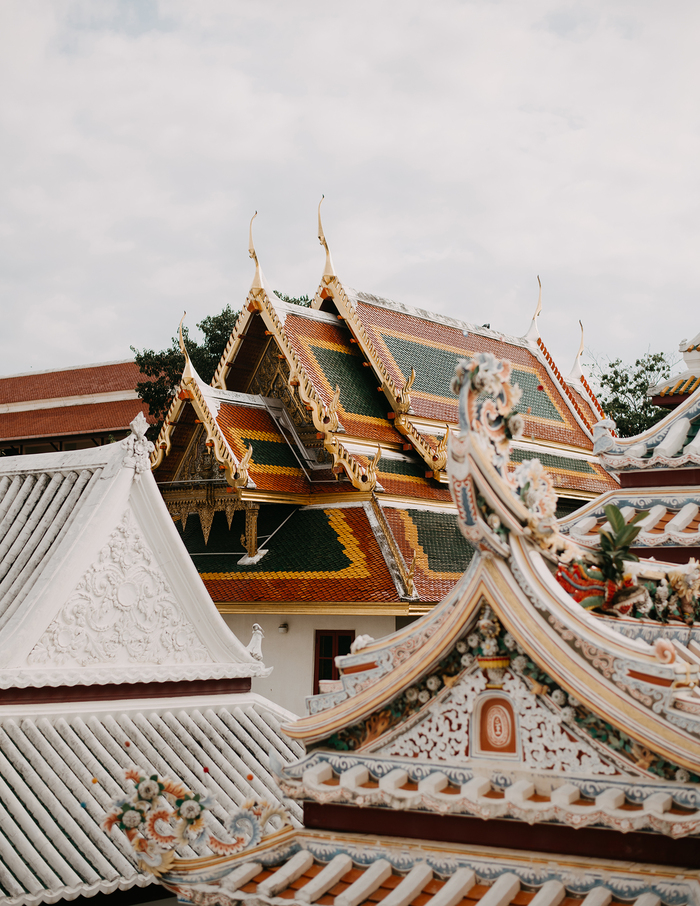
The second education is adinnādānā. I dedicate myself to studying the lesson of not taking what doesn’t belong to me. This means respecting ownership. Generally, when we are born, do we have the idea of stealing someone’s belongings? No. That is normal humanity.
The third education is about avoiding the violation of human rights, kāmesumicchācāra. Generally, this is translated as sexual misconduct, but I feel that this is not entirely accurate, as kāme can mean either sexual or sensual. In Pali, this refers to all five senses—eyes, nose, ear, mouth, and body. You shouldn’t violate someone’s rights through these five senses, which in modern terms refers to respecting human rights.
The fourth education, musāvāda, involves dedicating oneself to not telling lies, not spreading fake news, or using harmful speech, slander, or bad words. Again, when we are born, we don’t know how to lie.
The fifth education is about not taking intoxicants, which means not consuming goods or substances that distort the mind. These days, we call it intoxication—mainly drugs. Sura is often translated as alcohol, but it actually refers to anything that makes your behavior abnormal or your thinking distorted, whether it be alcohol, drugs, or any mind-altering substance.
These are the five lessons of life, called the Five Precepts or sīla. If you want to practice Buddhism, these are the five lessons that Buddhist monks will teach first.
Nowadays, the term vipassana is really well-known thanks to figures like S.N. Goenka, while the word samatha might be met with blank stares. Can you tell us more about these two types of Buddhist meditation and how they complement each other?
Samatha is sometimes called concentration or tranquility. It refers to pacifying and calming the mind. Pacifying the mind means calming it with the help of tools, such as focusing on your breathing or observing an object or color. Our mind is like a monkey, never sitting quietly or still, always jumping from one thought to another. This constant movement diminishes the mind’s power and ability due to a lack of concentration.
Concentration is a normal human practice. To achieve success in anything, you need to unify your mind, body, and heart. For example, when studying for exams, with concentration you can cut off distractions and memorize things clearly. Similarly, in business, you work with data more effectively when focused. Without concentration, tasks become difficult. This first step that we need to develop is called samatha.
However, the Buddha believed that samatha alone is not enough. Simply pacifying the mind and concentrating with one-pointedness is not sufficient. So, the Buddha introduced a second step in Buddhist mindfulness practice, called vipassana. Because of this, many people consider samatha to be lower and vipassana to be higher. However, according to the texts, this is not a hierarchical structure but rather two different developmental paths. Concentrating your mind can stop certain thoughts and focus on something good or neutral. It is not about good or evil, but neutrality—just breathing in and breathing out.
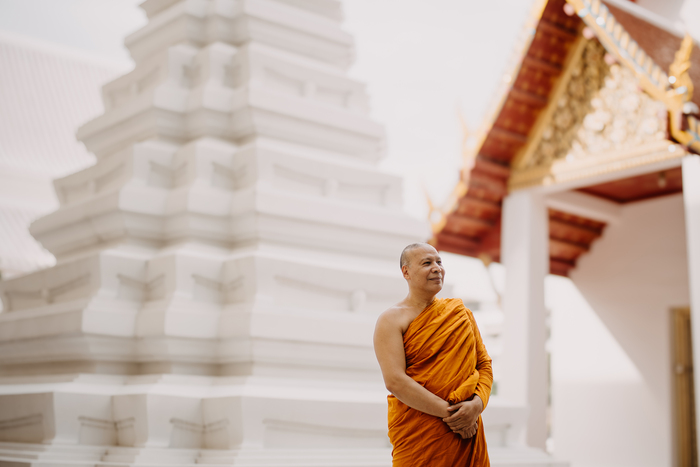
Once you achieve samatha, the Buddha advises developing your mind to be more comprehensive and contemplative. This is known as vipassana. Vipassana is generally translated into English as "insight," although this term might not fully convey its meaning. I personally prefer to translate "vi-" as "extraordinary," since "vi-" in Pali means special, and "passana" means seeing. Therefore, vipassana is about extraordinary seeing, an X-ray way of seeing things.
With developed vipassana, you don’t just see a cup as a cup. With X-ray vision, you see it as ceramic, clay, and various components. You understand that it is made up of elements like earth, energy, and water. When you understand what makes a cup, you begin to see that there is no such thing as a cup. This questioning is part of vipassana, which leads to extraordinary seeing.
What we normally do is that we see a cup and think, “Oh, this is a nice cup, good quality, expensive, and a gift from a dear friend, so I love this,” and we start to develop attachment. Attachment plants the seed of suffering. If you practice vipassana, you see that the cup is just a collection of parts and does not exist independently. For example, if you see a piece of paper through vipassana, you might recognize it as part of a larger process involving clouds, rain, and trees. This way of looking through vipassana reveals that objects are interconnected and not fixed. By understanding this, you become free from attachment and suffering.
Acceptance of reality as it is, and adapting to it, leads to what is called sukha or happiness in Buddhism. Unlike the English word "happiness," which is often associated with luck or fortune, sukha in Buddhism means ease and tolerance. The Pali word "sukha" breaks down into "su," meaning ease, and "kha," meaning tolerance or adaptation. It reflects an understanding that one should not expect more than what is naturally possible. By adapting to your surroundings and taking responsibility for yourself and society, you align with the true essence of Buddhist practice.
The Buddha taught monks to live in harmony with nature, cultivate self-sufficiency, and even practice recycling—principles that seem remarkably aligned with modern environmentalism. What lessons can today’s world take from Buddhist monastic traditions in addressing climate change and ecological crises?
These days, sustainability has become our mantra. The UN talks about sustainable development, though I’m not sure whether the UN fully understands the term, because for many people, sustainable development seems meaningless. It appears contradictory, as development implies constant upward change, while sustainability suggests something unchanging, long-lasting. If something is long-lasting, it’s not changing; if it’s not changing, it’s not developing. So, from a practical standpoint, what does sustainable development actually mean?
Here's where we can turn to the Buddha’s teachings. We have the Dhammacakkappavattana (Skt. Dharmacakrapravartana), the Buddha’s first sermon, that is usually translated as "turning the wheel of Dharma." But that’s just the literal meaning. Etymologically, Dhammacakkappavattana essentially means sustainable development in action. Dharma represents the idea of sustaining—sustainability is Dharma itself. Meanwhile, chakra is often thought of as a wheel, but its etymology conveys moving forward with a firm foundation. So, it implies progress grounded in stability.
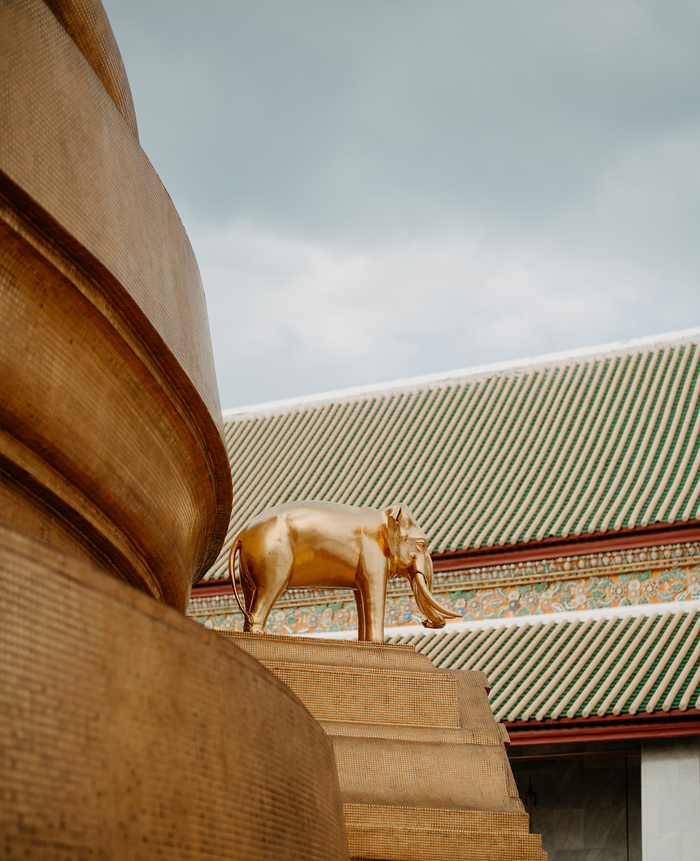
In his first message, the Buddha already discussed sustainable development, but I might add, in a more profound way than the modern concept used by the UN. He emphasized that sustainable development shouldn't be just an ideology; it should be pavattana, meaning an action or practice.
The core of Buddhism, or Buddhadharma, revolves around the practice of sustaining oneself. When we talk about sustaining ourselves, we’re referring to both our physical and mental existence, and even our spiritual existence. The question is: how do we balance and uphold all these aspects—physical, mental, and spiritual? This balance is what the Buddha's teachings were all about.
What then are the core principles of living a sustainable and balanced life according to the Buddha?
The Buddha asks, “How do you practice then?” The first thing he teaches is to be sustainable in consuming your livelihood. How do you consume throughout your life? When you eat, how do you eat? How do you cook? How do you store your food? Everything related to your livelihood must be understood and moderated. You should not be extreme.
As Mahatma Gandhi said, “There is an abundance in the world for human needs, but not enough for human greed.” The same principle applies here—moderation is key. This is the first lesson the Buddha gives when you become a monk.
The second practice for monks is to live with nature. Nature is our home, our house. We should take care of it. From nature, we get oxygen, fruit, and food. Be grateful for nature and what it provides, and in return, care for it. This is another form of moderation, living in harmony with nature and leading a sustainable life.
The third lesson is that instead of indulging in sensual pleasures, your new life should be sustainable through recycling. Whatever you use, recycle or upcycle it. The Buddha said that if you need a robe, don’t ask for a new one. Go to the cemetery or forest, where clothes have been used to wrap dead bodies. These bodies no longer need the clothes, so we respectfully unbind them, clean them, and use them as robes. Even today, our robes are often made from recycled materials. For example, the robe I’m wearing is made from plastic waste, from a total of fourteen discarded bottles. This is recycling—living a life of sustainability.
The fourth lesson is about self-sufficiency. Look after yourself. Take care of your health, use medication when needed, but don’t rely too much on external sources. Be self-sufficient.
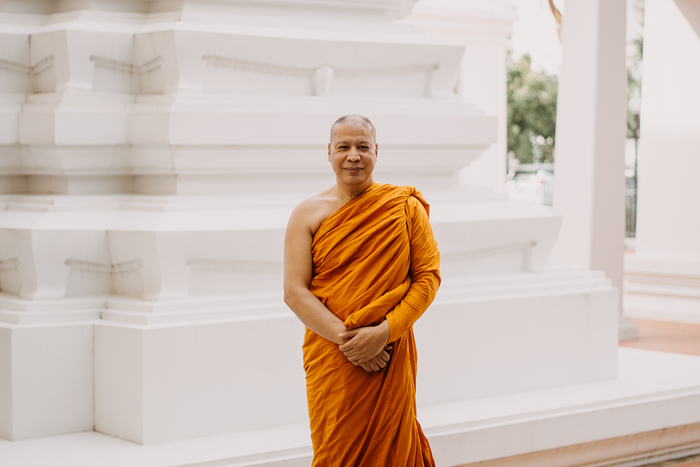
These are the four principles of sufficient living that the Buddha taught to move away from sensual pleasures and the life of a householder. These principles—sufficiency in livelihood, living with and respecting nature, recycling, and self-sufficiency—are examples of what we now call a modern sustainable life. The Buddha shared these 2,500 years ago, and they are as relevant today as they were then. This is the life of a monk, and this is the true essence of living a sustainable, modern life as taught by the Buddha.
It’s remarkable that the Buddha’s teachings, given over two and a half millennia ago, remain not only relevant today but perhaps more essential than ever. Given the pressing issues of our time, particularly the challenges posed by modern capitalism, how do you think the Buddha’s insights on balance and human well-being would apply to today’s economic systems?
The problem of capitalism is one of the most important issues of the 21st century. People often react against capitalism and consider alternatives like socialism, wondering if it might be a better approach. However, it's not just about the "ism"—it's about understanding the core problems and how to address them.
Capitalism is often associated with Adam Smith, who coined the term and laid out its principles. The core idea of capitalism is profit before people, where profit takes precedence over other factors, especially human well-being. However, it would be unfortunate to place all the blame on Adam Smith, as this view primarily stems from reading his book Wealth of Nations. Smith was also a great ethicist and moralist who believed that capitalism could not function without morality. His teachings emphasized that the world can only thrive through moral principles.
Capitalism, as practiced today, seems to have gone to extremes. While capital with a small "c" is necessary for many aspects of life, including conducting interviews like this one or running businesses, it should not focus solely on profit before people. Buddhism offers a different perspective: people before profit. This approach prioritizes human well-being and the welfare of all sentient beings.
The economy should serve people, not the other way around. Socialism, which emphasizes community and human welfare, aligns more with Buddhist principles. However, Buddhism also acknowledges the reality of the world, including the presence of negative elements that require systems like prisons and laws. A utopian world is unrealistic, as even divine realms are not free from imperfections.
Balancing various systems and principles is crucial. The focus should not be on adhering strictly to capitalism, socialism, or any other "ism," but on using these systems in a balanced way to achieve happiness and sustainability. Buddhism emphasizes this balance, suggesting that Dharma or natural law should guide how we use systems and theories to improve our lives and the world.
Whether referred to as Dharma economics or Dharma socialism, the key is maintaining equilibrium and upholding natural laws. This balanced approach is what Buddhism teaches and advocates.
It’s fair to say that the fear of death is universal, largely because of its uncertainty. In the West, however, death is often sanitized or hidden from view—many people never see a dead body, and funeral practices often mask its reality. This has created a far-reaching disconnection from one of the most natural aspects of life. How can Buddhism help us confront and make peace with death, rather than avoid or fear it?
Actually, one of the aspects people frequently ask Buddhist monks about is death. I do believe that death is approached differently in the East and West. From the Western perspective, death is more private. In contrast, from the Buddhist point of view, death is more communal, focused on understanding the reality of life. This is why, in Buddhist countries like Thailand, death doesn’t typically evoke much crying. During funerals here, it's rare to see people cry because it’s viewed as a communal event.
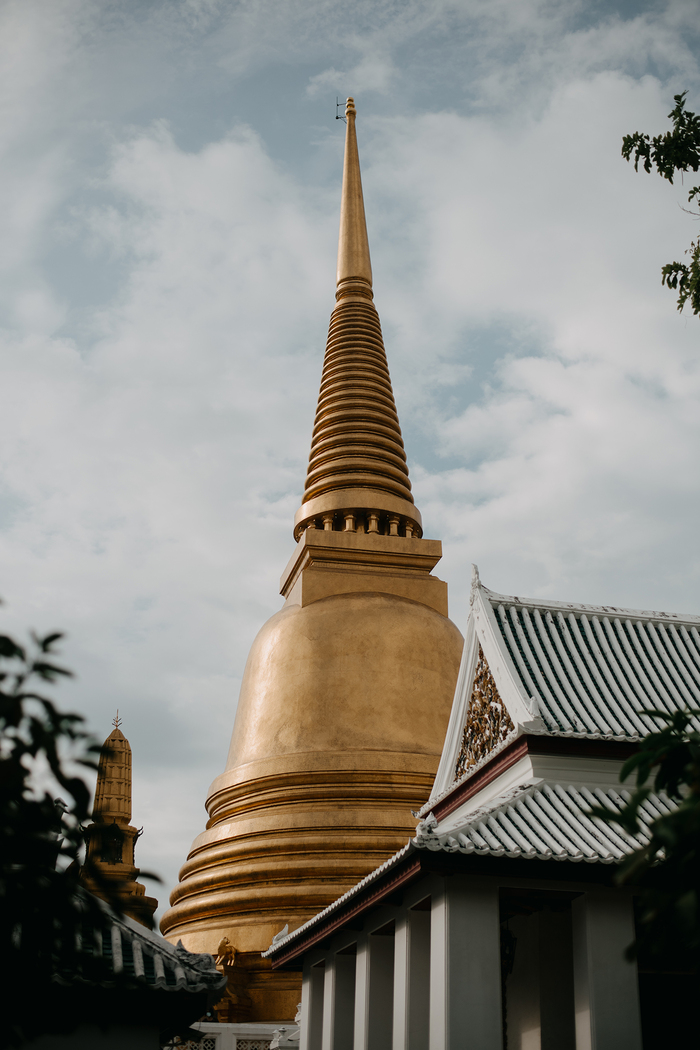
People honor the deceased; they decorate the body in coffins and invite monks to chant and give sermons. Funerals become a time for friends, family, and loved ones to gather, chat, and listen to the chanting, which is about impermanence, how to console the mind after death, and so on.
We don’t view death as something dangerous or unfavorable. We accept death as a bonus—when you’re born, it’s already with you. It just depends on when we use it. I always ask at funerals, why are we so sad when someone dies? Is death inherently linked to sadness? I say no, not at all.
If death were related to sadness, we would cry every time we saw news of someone dying, every minute, every day. But when we are born, we are fresh, without knowledge or preferences. Our identity depends on what our parents and experiences contribute. For example, in becoming who I am, I would say my parents contributed maybe 10%, while my master, with whom I’ve spent over 40 years, contributed about 40%. My friends, professors, books, and experiences make up the rest of who I am.
When someone close dies, like a parent, it means a small part of me—10% of what makes up Anil—vanishes. That creates uncertainty and insecurity, as if a part of you has been cut away. How deeply this affects you depends on the significance of the relationship. If it was a very strong connection, it may take a long time to heal and replace that void. If it was less significant, you may feel sadness or offer condolences, but the impact isn’t as deep.
This is the Buddhist way of viewing death, both as an example and a lesson. Death is inevitable, regardless of your status, whether you are a king or a beggar, at the top of Mount Everest, or deep in the ocean. You cannot escape it. We chant that death will always come—it’s inescapable.
Once you accept that death is inevitable, you begin to see it as a challenge—a limitation on your ability to do good. Death becomes a reminder to ask, “How much time do I have left to fulfill my duties as a father, monk, student, or politician?” You begin to value time and make the most of what remains.
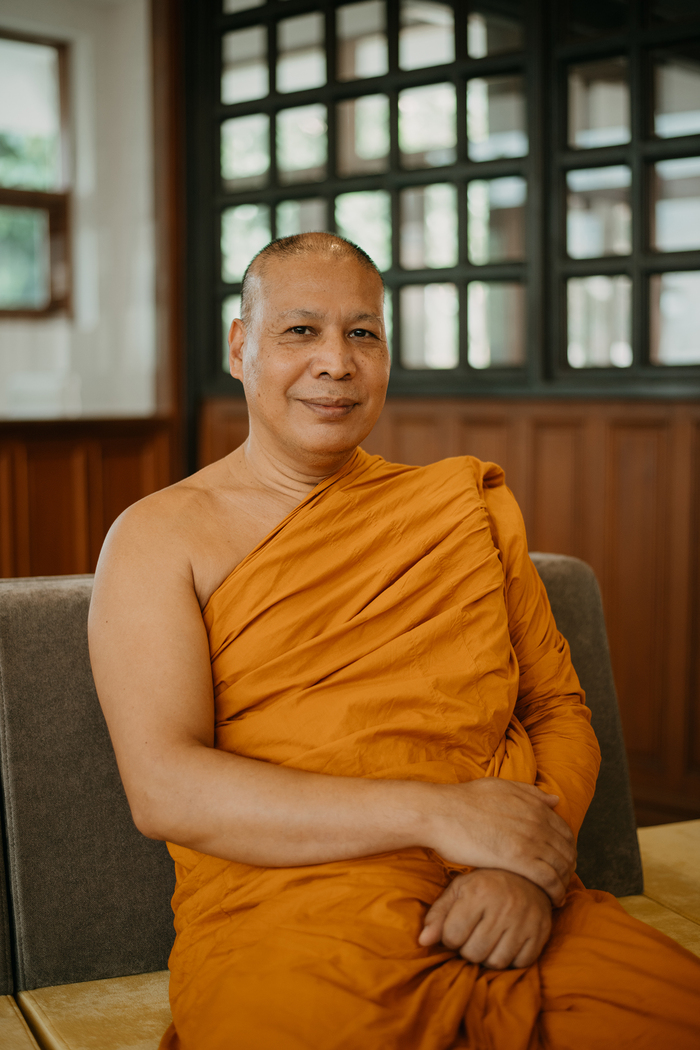
Death is unavoidable, but it can motivate your actions, prompting you to do good while you still can. That’s the Buddhist approach to death. Once you’re dead, your opportunities are gone. In Buddhism, death and time are synonymous. When someone dies, it means their time is up. Time, in essence, is what dictates our lives, and we are slaves to it, always living either in the past or the future.
The Buddhist perspective encourages everyone, whether Buddhist or not, to view death as a lesson. It invites you to ask yourself: How much time do I have left to do good and fulfill my role in life?
You’ve just touched on the idea of doing good and benefiting the world, which leads perfectly into my next question about merit. There’s often a misunderstanding that merit is something transactional—like a spiritual bank account where good deeds accumulate rewards. Could you clarify what merit truly means in Buddhism and how it functions beyond this simplistic view?
In Buddhist communities, one of the most common practices you'll observe is "making merit." For many, this concept can be confusing, especially when viewed from a materialistic or economic perspective. People often think of merit as something earned by giving food to monks or donating to temples. While these acts can be part of merit-making, they don’t fully capture the deeper meaning of merit in Buddhism.
Merit, or puñña in Pali, translates to cleansing or purifying. This concept existed long before the Buddha's time, when Brahmins performed rituals, such as bathing in rivers, to purify themselves of sins. The Buddha, however, challenged these practices, questioning whether animals living in the water were always pure or if simply bathing could wash away wrongdoing. He emphasized that true puñña is not physical cleansing but mental purification.
The Buddha taught that the real defilements of the mind are greed, hatred, and ignorance, and these are what we need to cleanse to create merit. It is not about dipping into water or performing superficial acts, but about working on the mental impurities that cloud our mind. Merit, then, is the process of reducing or eliminating these defilements.
In modern Buddhist societies, people sometimes approach merit-making as a transactional or economic exchange. For example, in Thailand and other Buddhist countries, people give food to monks and describe it as "making merit." Some believe that by giving, they will receive good luck or good deeds in return. This folk-level understanding of merit reduces it to an investment rather than a spiritual practice.
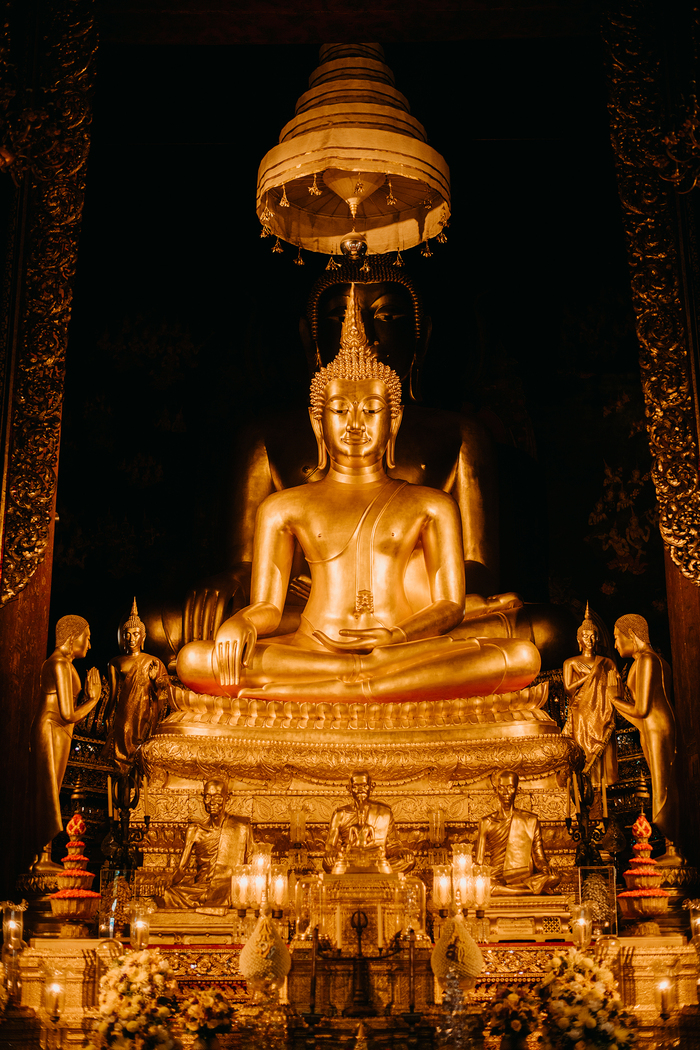
Monks often clarify that giving to reduce your own attachment or greed is true merit-making, not expecting something in return. Whether you share food with a monk or anyone else, the act should come from a place of generosity and detachment, not from a desire for personal gain. The Buddha's teaching on puñña is about cleansing the mind of ego, selfishness, and attachment through selfless acts.
True puñña is not about accumulating material rewards but about cleansing the mind. When you give, do voluntary work, or perform kind actions, the real merit comes from reducing your own greed, hatred, and ignorance. This is what the Buddha defined as real merit: a mental purification that aligns with the deeper teachings of Buddhism.
Finally, in a world so vastly different from the one the Buddha lived in, what lessons can we take from his life? How can his incredible journey—rooted in an ancient era—still inspire and guide us through the complexities of modern life?
When discussing the life story of the Buddha, I always tell my students not to take it too literally. The focus should not be on the story itself, but on its essence. The life of the Buddha is not just history; it’s his story. But, when learning about the Buddha’s life, I encourage my students to imagine themselves as the Buddha, making his story their own.
Many aspects of the Buddha's life involve miracles, but I suggest setting those aside, as they symbolize his teachings. For instance, the Buddha walking seven steps after birth is often seen as divine, but I explain that this likely symbolizes his teachings spreading to seven states at the time. It’s important to view these stories through a Dharmic lens, focusing on their deeper meaning rather than the miraculous elements.
The life of the Buddha is about struggle—a universal human experience. Whether it’s a struggle to understand the world or to make decisions in daily life, we all face the same kinds of challenges that Siddhartha faced 2,500 years ago. If you see the Buddha’s life as your own, you’ll recognize the parallels in the struggles you face today.
Ultimately, the Buddha's life teaches us how to deal with society, nature, and even difficult people, like unethical businessmen or politicians. Most importantly, it shows us how to deal with ourselves and how to grow so we can live harmoniously with the world around us. This is the essence of the Buddha’s life and teachings.
Amazing. Thank you so much, Phra Anil Sakya, for taking time today out of your very busy schedule, and for sharing such inspirational wisdom with us.